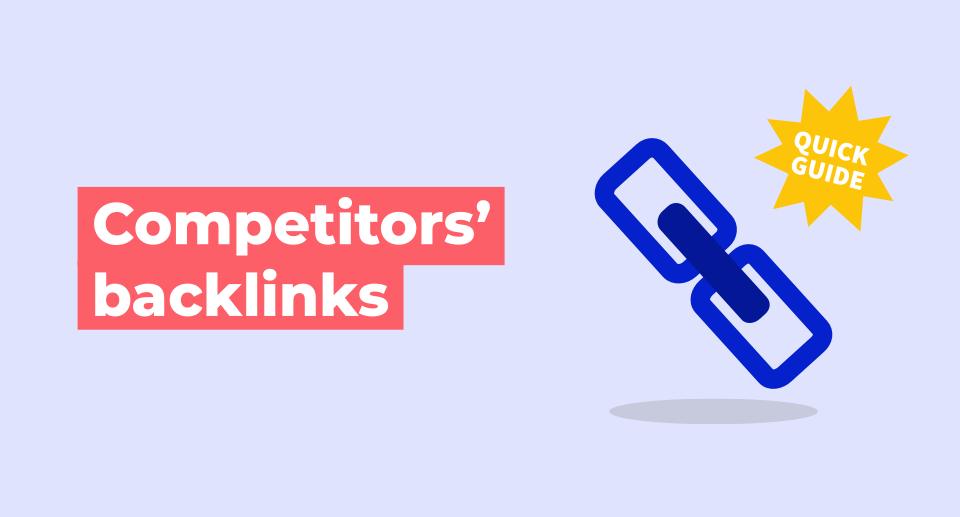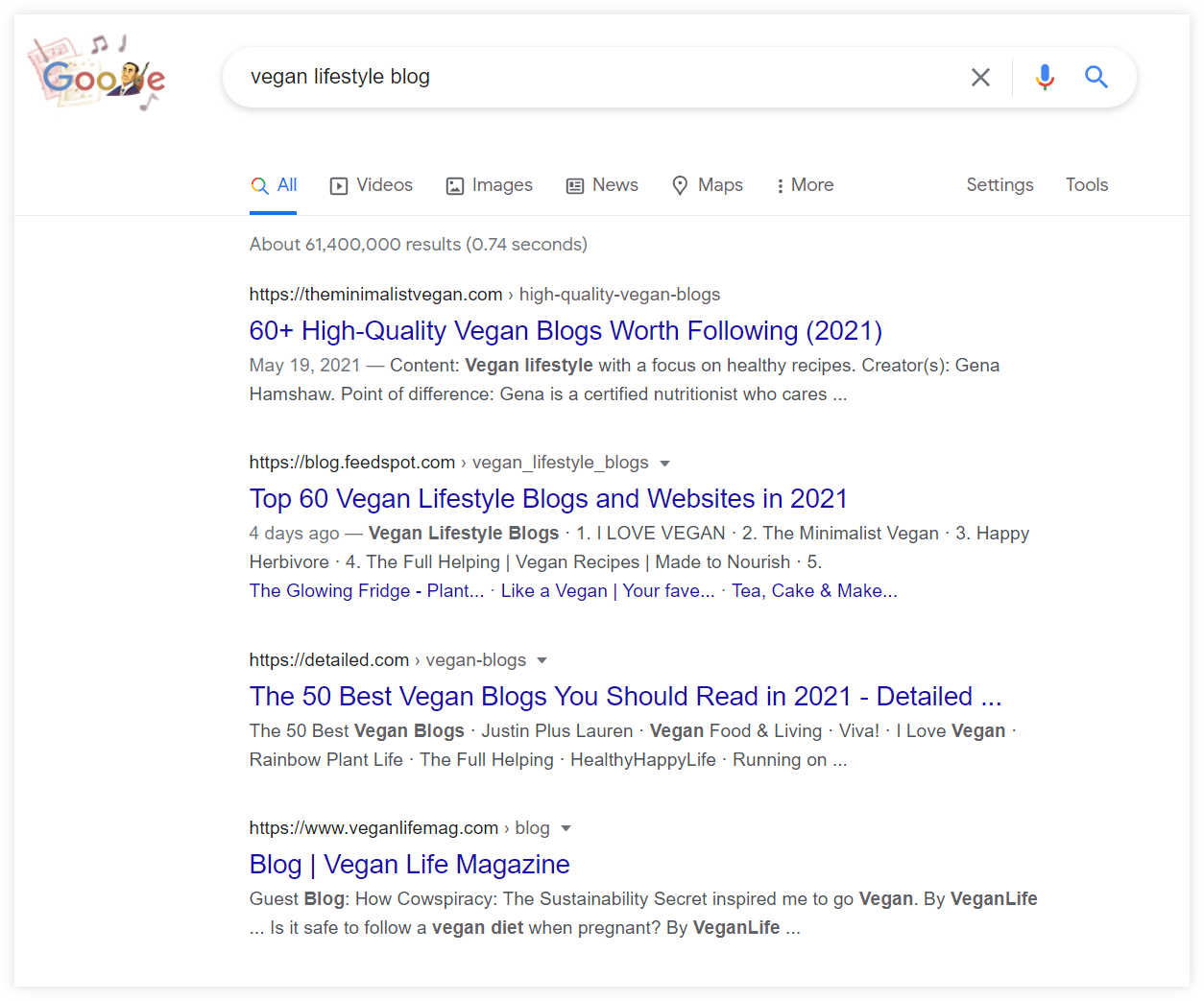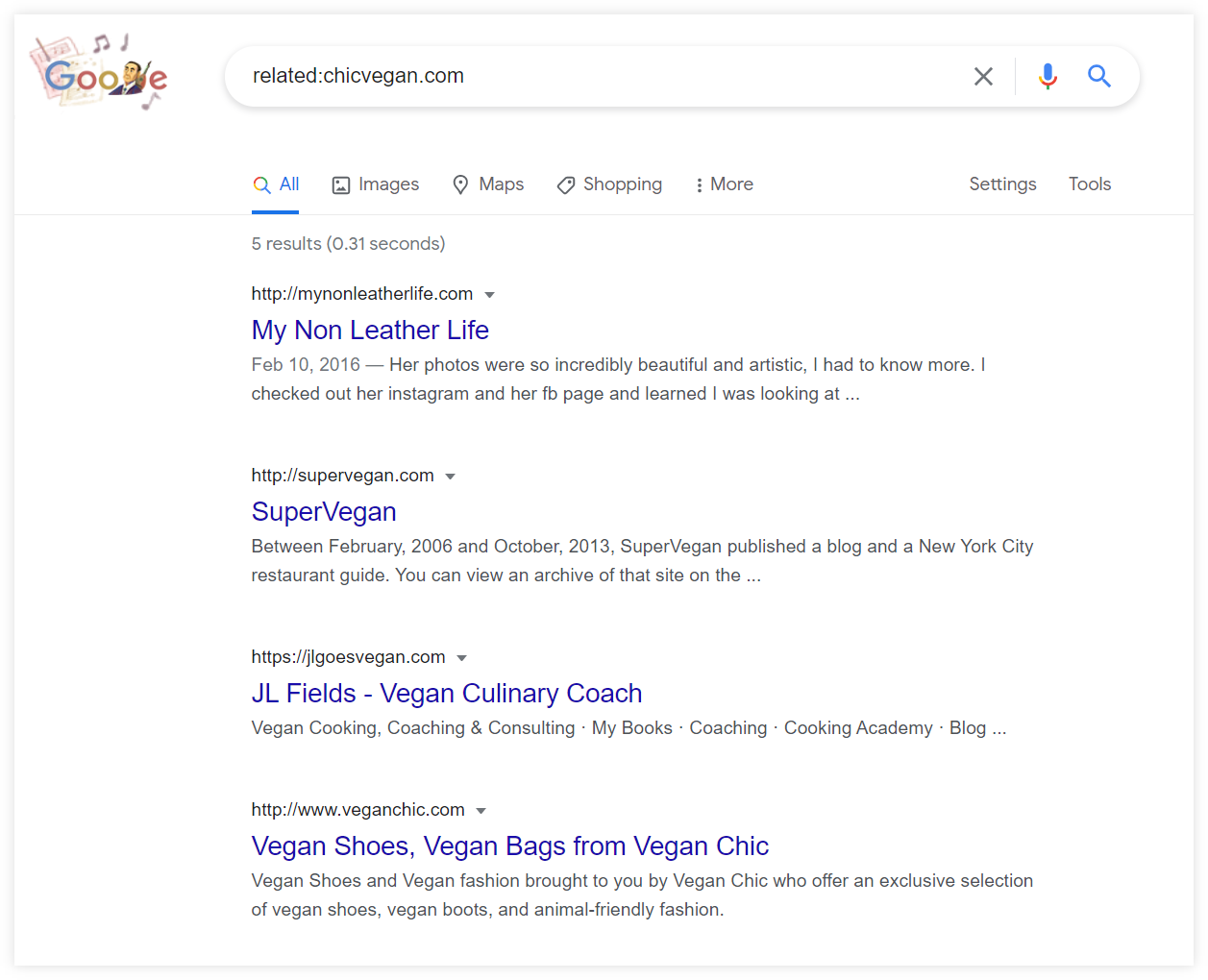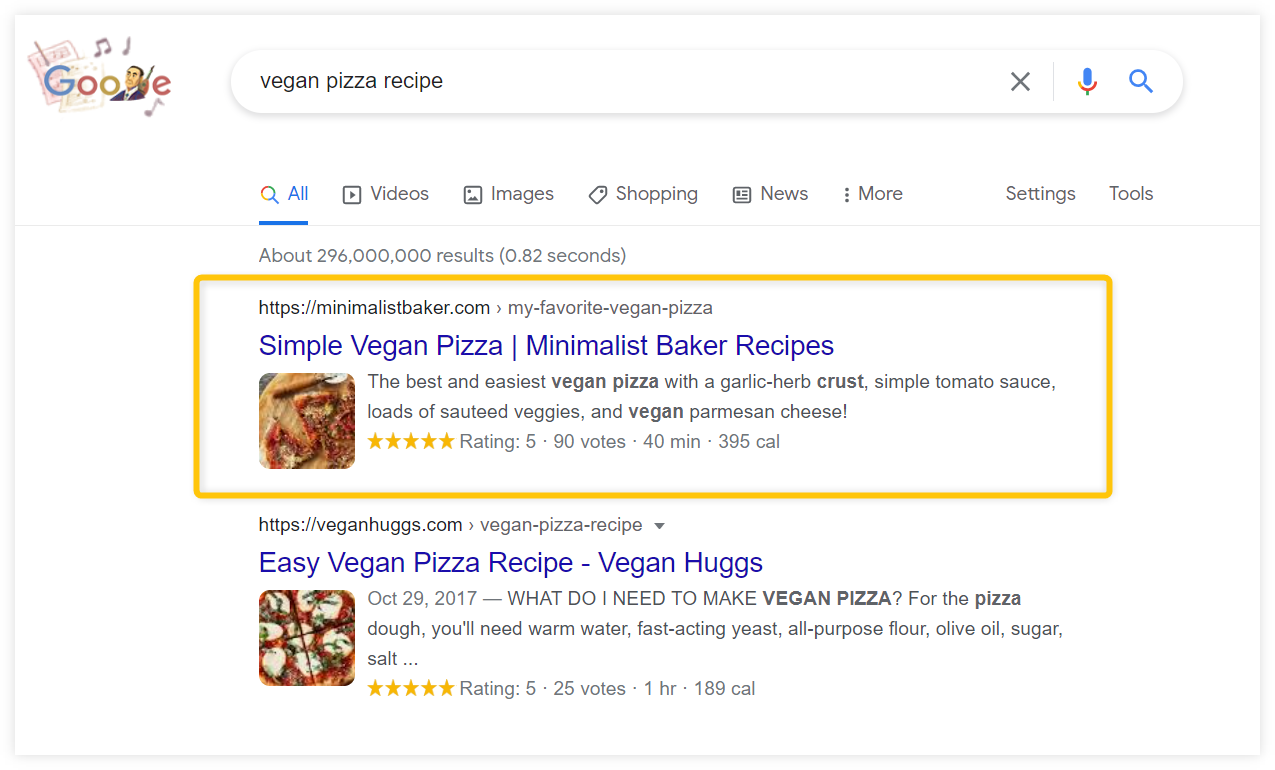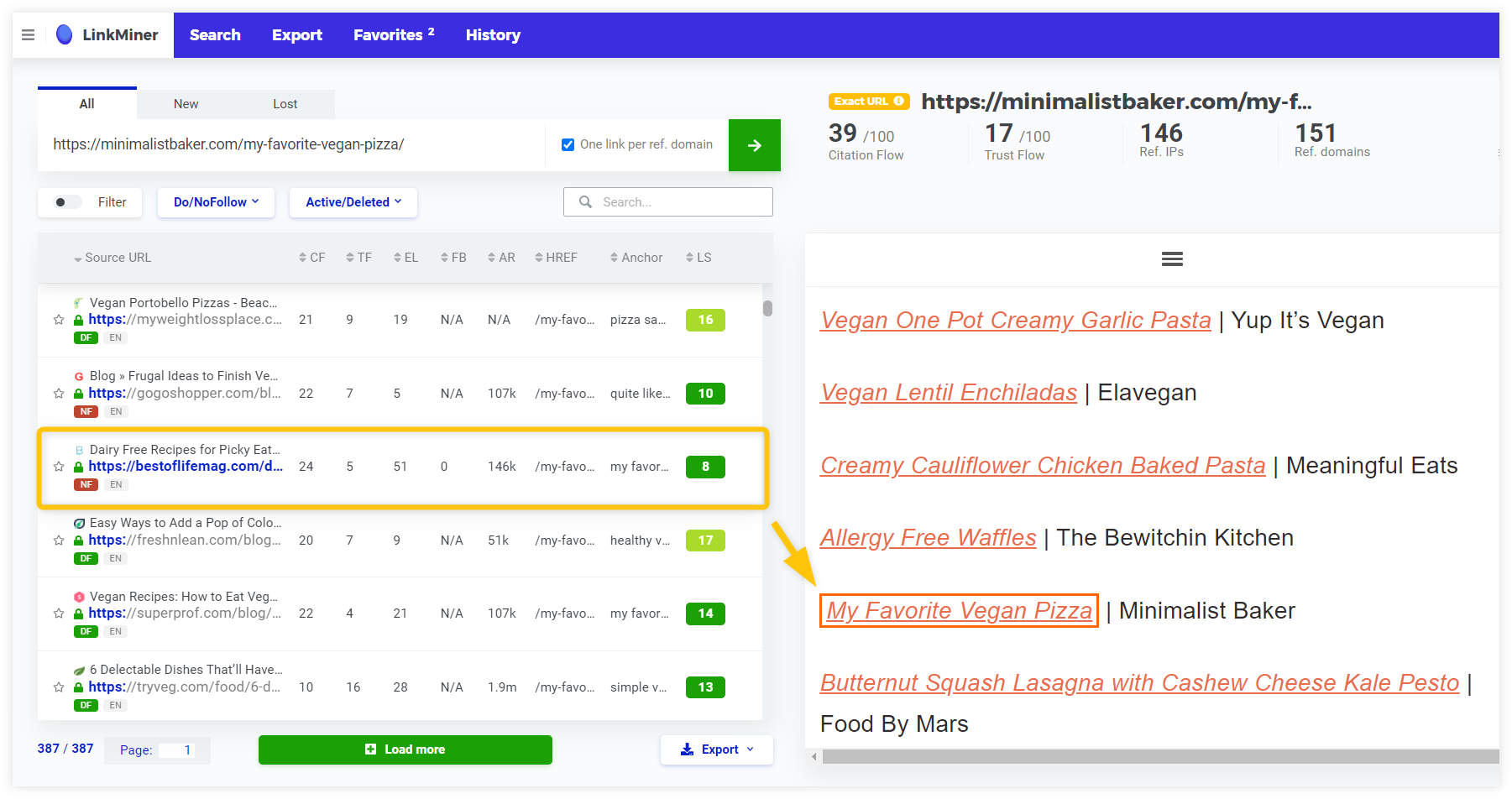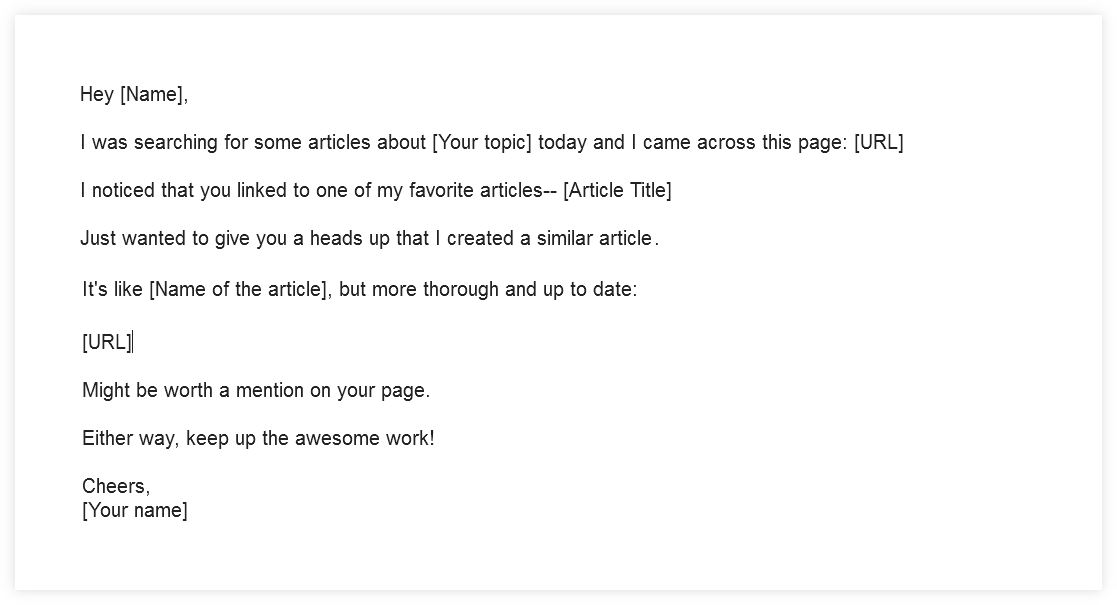Backlinks are still an essential part of SEO.
And what is the best way to find them? By spying on the backlinks of your competitors.
In this quick step-by-step guide, we’ll take a look at how to check the competitors’ backlinks in a couple of minutes.
We’ll go through these 3 simple steps:
How to find your competitors in Google
When doing competitor analysis as a part of your link building strategy, you may struggle with the very first step:
Who are my competitors?
Here are some simple tips to find your competitors in a couple of seconds:
Websites in your niche
The first (and most obvious) step is to simply look for the main keyword of your niche in Google.
If you run a blog about a vegan lifestyle, just Google for “vegan lifestyle blog” and you’ll most probably find:
- Blogs in this niche
- Lists of blogs in this niche
If the results are not satisfactory, you can try a more advanced technique using the search operator.
The related: operator
This is quite a simple and neat technique you can use to find your competitors using a Google search operator. All you need to do is to insert the related: search operator + your domain to Google search form:
related:yoursite.com
The results will be websites topically related to the web used in the search query.
Here’s an example of websites related to chicvegan.com:
The results include sites such as supervegan.com or veganbeautyreview.com which are clearly the competitors from the vegan lifestyle niche.
Note: This search operator works only for websites with a certain amount of traffic. If you don’t find any websites related to your web, pick a big competitor from your niche and try with their website.
How to find competitors’ backlinks
I’ll be honest, doing a link building campaign isn’t my favorite part of the SEO process. It’s not 100% in your hands and it usually takes a lot of time.
However, there are handy tools such as LinkMiner that can make the whole process a lot easier.
Tip: You can create a free 10-day trial account (no credit card needed) and try LinkMiner yourself alongside this guide. You can check 500 backlinks per 24 hours for free.
All you need to do is to enter your competitor’s domain or a specific URL and the tool will show the backlinks pointing to it.
This brings us to the basic classification of competitors:
a) Domain competitors
Domain competitors are websites that compete in the same niche as your site. By checking their link profile, you can find interesting backlink opportunities.
b) Page competitors
Besides the general competitors, there are also competitors on a page level.
Let’s say you wrote a blog post with your vegan pizza recipe. A quick Google search will show you many other websites ranking for the term.
Just select the first one and run the URL through LinkMiner.
Now you have found backlinks pointing to that specific blog post. The minimalistbaker.com may not be your general competitor on a domain level (the blog is probably not only about vegan recipes) but it is your page competitor for a specific topic.
Now you can select backlinks that are interesting for you and add them to a list (by clicking on a little star next to the backlink row).
What to focus on when evaluating the backlinks:
Link Strength
Link Strength is a metric that calculates how powerful is the backlink from a certain website, based on the authority of that website. In simple words – the more authoritative is the linking website, the more authority will your web get if the site links to you.
Pro tip: Set up the filter to show only do-follow links. Nofollow links do not pass the authority, so they are irrelevant for your SEO efforts.
Link relevance
Even though the backlinks pointing to your competitor should be relevant, make sure they really are by checking the linking page. Trying to replicate an irrelevant backlink with no added value to the reader is a waste of time. These backlinks are useless.
Link placement
The right side of the LinkMiner interface offers a quick preview of the linking website with the placement of the backlink. The most valuable backlinks are those in the body of the text, while backlinks in sidebars and footers are not that effective nowadays.
In LinkMiner, you can check both relevance and link placement thanks to the right panel with the preview of the linking page and a highlighted anchor text.
How to replicate the backlinks
Now that you’ve selected the relevant, strong and well-placed backlinks of your competitors it’s time to replicate them!
How? With the good old email outreach.
You need to contact the website owners or the authors of the posts and ask them to:
a) Link to your website instead of the website of your competitor (this is called The Skyscraper Technique)
b) Add your website/post as an additional resource next to the link to your competitor
The Skyscraper Technique is a simple link building technique named by Brian Dean.
All you need to do is to find the best article on a certain topic and write a better piece of content. Then contact all the websites linking to your competitor and ask them to link to you instead.
Ways to make your content better:
- Make it longer
- Design it better
- Cover the topic more deeply
- Make the content more up-to-date
It’s like finding the tallest skyscraper in the town and building one that is even higher.
Email outreach is an overused link building technique. But there are many people who just do it wrong, which means you can shine easily.
Here are some basic email outreach tips you should follow:
Don’t use email templates – using an outreach email template is lazy and people you’re contacting don’t want to feel like they’re one of the 500 other contacts on your list. If you don’t bother to write a personalized message, why should they bother to link to you?
Personalize the email – instead of using the templates, take the time to make every message well-crafted and personal. Quality always beats quantity and it’s especially true when it comes to email outreach.
Make it easy to link to you – the whole process should as easy as possible for the website owner you’re contacting. Tell him where the link could be placed, what anchor text to use or write a whole new paragraph to make the backlink fit naturally. All he needs to do is to copy and paste your text.
Follow up – if you don’t get an answer in a couple of days, give it another shot with a simple and polite follow-up email. One is just enough. Don’t be that annoying follow-up guy with 5 emails in 5 days.
That’s it
Link building is a long process that can last days, even weeks.
It may not be an activity you enjoy, but as long as links are a Google ranking factor, we have to do our best to play the “backlink game”.
I hope this quick guide will help you to find and replicate the quality backlinks of your competitors to boost your SEO efforts.


